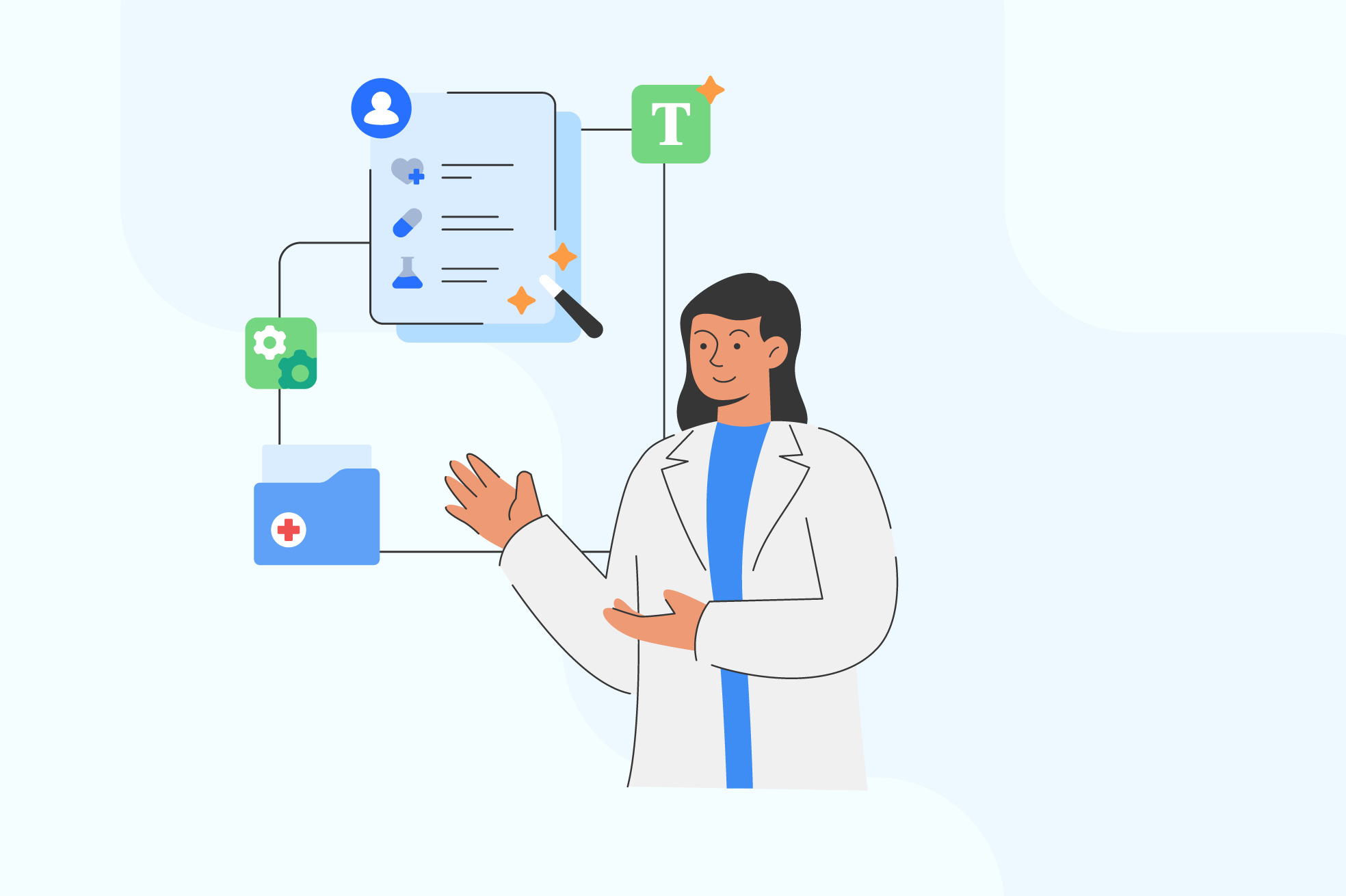How to Make Chiropractic SOAP Notes

Chiropractic documentation is a vital aspect of patient care that serves multiple essential functions in a chiropractic practice.
Accurate and comprehensive documentation helps chiropractors provide high-quality care by maintaining detailed records of patient interactions, treatments, and outcomes. This meticulous record-keeping supports clinical decision-making, ensuring that each patient's care is tailored to their unique needs and medical history.
Moreover, proper documentation acts as a legal safeguard, providing a chronological account of patient care that can be crucial in legal scenarios and insurance claims. It also reflects a chiropractor's commitment to professional excellence, which can enhance their reputation and patient trust.
Effective chiropractic documentation not only facilitates continuity of care across multiple visits and practitioners but also ensures compliance with regulatory and insurance requirements, thereby safeguarding both the patient's health and the chiropractor's practice.
Chiropractor Doctor's Note: the Basics
A chiropractor doctor’s note is a detailed written record created during a patient encounter within a chiropractic practice. This note plays a crucial role in documenting patient care, capturing essential information about the patient's visit, including the present illness, the patient's symptoms, and the treatment plan prescribed by the chiropractor.
Chiropractor doctor's notes are vital for several reasons. They help in forming a primary diagnosis, guiding the treatment plan, and ensuring continuity of care. These notes also serve as legal documentation and are essential for insurance purposes. Accurate and thorough documentation supports effective communication between healthcare providers and ensures high-quality patient care.
Essential Components included in chiropractic notes:
- Patient Information: Basic details such as name, age, and contact information.
- Present Illness and Patient’s Symptoms: Detailed account of the patient's current condition and reported symptoms.
- Subjective Findings: Patient's personal account of their condition and history.
- Objective Findings: Clinical observations and examination results by the chiropractor.
- Primary Diagnosis: The chiropractor’s diagnosis is based on subjective and objective findings.
- Treatment Plan: Detailed plan outlining the treatment provided and future recommendations.
- Follow-Up Instructions: Additional advice and instructions for the patient to follow after the visit.
The SOAP Acronym: What It Means and What It’s For
SOAP stands for Subjective, Objective, Assessment, and Plan, and is a widely used method of documentation employed by healthcare providers to write notes in a structured and organized manner.
- Subjective (S): This section captures the patient's personal experiences, complaints, and feelings about their condition. It provides insight into the patient's perspective, helping to guide the treatment plan: patient's reported symptoms, medical history, pain levels, and lifestyle factors affecting health.
- Objective (O): This section involves documenting the clinical findings and observations made by the healthcare provider. It provides a factual, unbiased account of the patient's physical condition. Results of physical examinations, vital signs, laboratory test results, and imaging study findings.
- Assessment (A): This part involves the healthcare provider's professional judgment regarding the patient's condition. It combines subjective and objective data to form a diagnosis and determine the best course of action. Diagnosis is based on collected data, clinical impressions about the patient's condition, and progress evaluations.
- Plan (P): This section outlines the treatment plan and any follow-up care required. Ensures continuity of care and provides clear instructions for future visits. Detailed treatment strategies, prescribed medications or therapies, recommendations for lifestyle changes, and scheduling of follow-up appointments.
How to Craft Effective SOAP Notes
Crafting effective SOAP notes is essential for ensuring high-quality patient care and accurate documentation. Here are some tips and best practices for writing SOAP notes using a chiropractic soap note template.
Tips and Best Practices
Clarity and Conciseness
- Importance: Clear and concise notes are crucial for effective communication among healthcare providers. They help ensure that all relevant information is easily understood and accessible.
- How to Achieve: When writing SOAP notes, focus on using simple, straightforward language. Avoid unnecessary jargon and ensure each section of the note is to the point.
Thorough Documentation
- Importance: Comprehensive documentation is vital for capturing all aspects of the patient’s condition and treatment plan. It ensures that nothing is overlooked and that the patient's progress can be tracked accurately.
- How to Achieve: Utilize soap note templates to guide the documentation process. These templates help ensure that all necessary information is included in each section of the SOAP note, providing a complete picture of the patient's health.
Consistency
- Importance: Maintaining consistency across all SOAP notes is key to providing continuous and cohesive patient care. Consistent documentation practices help avoid discrepancies and ensure that all team members are on the same page.
- How to Achieve: Stick to a standardized format when writing soap notes. Use a chiropractic soap note template to ensure that each note follows the same structure, making it easier to compare and review patient records over time.
Different Ways to Take Down Notes
Traditional Methods - Pen and Paper
The traditional method of note-taking with pen and paper involves physically writing down information during patient encounters. This method promotes better memory retention and understanding because writing by hand slows down the process, encouraging the note-taker to process and summarize the information. Techniques like the Cornell method, outlining, and mapping are commonly used to structure handwritten notes effectively.
However, traditional note-taking has its limitations:
- It can be time-consuming to write and organize notes.
- Handwritten notes are less accessible and harder to share.
- It may be challenging to keep notes organized and easy to reference later.
These limitations have led to the adoption of digital tools that offer enhanced capabilities.
Digital Tools - AI Tools
AI tools like Quadrant Health can streamline and enhance the note-taking process by automatically transcribing and organizing information from patient encounters.
These tools use advanced algorithms to ensure that notes are comprehensive and accurate, reducing the time spent on documentation and minimizing errors.
By analyzing the most clinically relevant data, AI tools help healthcare providers maintain a clear and organized record of the patient's status and present illness, making it easier to review and update medical notes.
The benefits of AI tools for note-taking are several: these tools ensure consistency, accuracy, and efficiency. They can generate structured notes based on input data, provide summaries, and even suggest relevant information to include, which is particularly useful in high-volume settings like healthcare.
Quadrant Health’s industry-leading AI medical scribe transcribes encounters in real time making documentation more accurate and efficient.

